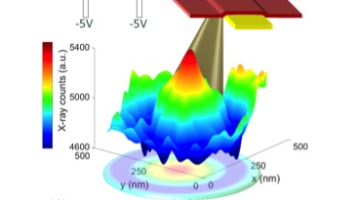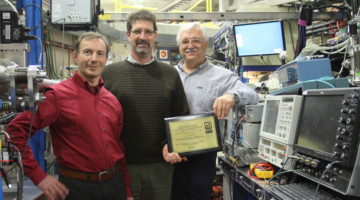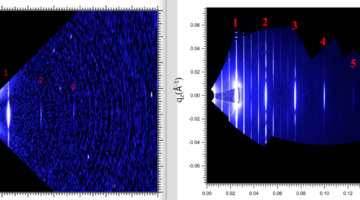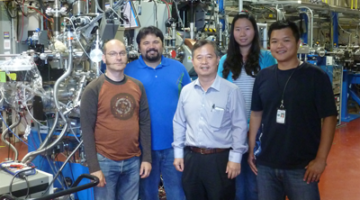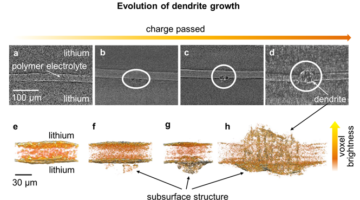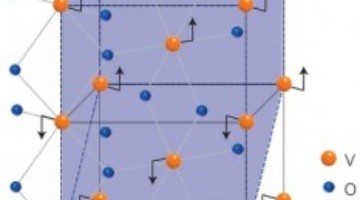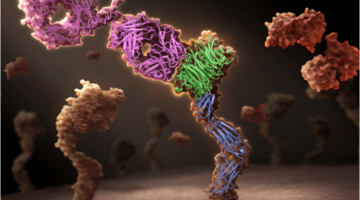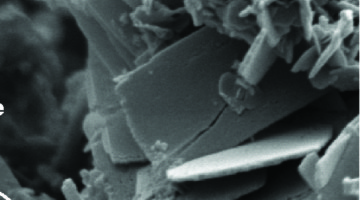For the past eight years, Hewlett Packard Labs, the central research organization of Hewlett Packard Enterprise, has been using cutting-edge ALS techniques to advance some of their most promising technological research, including vanadium dioxide phase transitions and atomic movement during memristor operation. Read more »![]()
Industry@ALS
ALS, Molecular Foundry, and aBeam Technologies Collaborate to Make Metrology History
A collaboration between Bay Area company aBeam Technologies, the ALS, and the Molecular Foundry is bringing cutting-edge metrology instrumentation to the semiconductor market, which will enable a new level of quality control. Read more »![]()
Takeda Advances Diabetes Drug Development at the ALS
Type 2 diabetes mellitus (T2DM), characterized by abnormally high blood glucose levels, affects hundreds of millions of people worldwide. In the pursuit to better treat this disease, the human receptor protein GPR40 has been identified by pharmaceutical company Takeda as a potential new drug target.
New ALS Technique Guides IBM in Next-Generation Semiconductor Development
A new measurement technique developed at the ALS is helping guide the semiconductor industry in next-generation nanopatterning techniques. NIST and IBM researchers collaborated on the technique, which allows scientists to evaluate the 3D buried features inside a film. The ALS is currently the only place in the world that has such capability.
Caribou Biosciences Has Roots at the ALS
When Rachel Haurwitz joined UC Berkeley biology professor Jennifer Doudna’s lab in 2007 as a graduate student, little did the two women know that the interesting bacterial immune system they were studying would be the subject of news headlines and the basis for a biotech startup just a few years later.
Toyota Collaborates with the ALS and Molecular Foundry
Toyota has been working at the ALS for a few years now to gain deeper insight into the chemistry of electrolytes for use in magnesium-ion batteries. The hope is that the research eventually leads to a fully developed magnesium-based battery technology that would replace lithium-ion batteries with essentially twice the energy in the same volume. Toyota hopes to move toward this goal more quickly through a new collaborative research project at the ALS and the Molecular Foundry. Read more »
ALS Technique Gives Novel View of Lithium Battery Dendrite Growth
Lithium-ion batteries, popular in today’s electronic devices, could gain significant energy density if their graphite anodes were replaced with lithium metal anodes. But there’s a major concern with substituting lithium—when the battery cycles, microscopic fibers of the lithium anodes (“dendrites”) form on the surface of the lithium electrode and spread across the electrolyte until they reach the other electrode, possibly leading to short circuiting. Researchers have recently discovered that the x-ray microtomography capabilities at ALS Beamline 8.3.2 can give them a novel view of dendrite growth that’s likely to provide the insight needed to stop it. Read more »![]()
IBM Probes Material Capabilities at the ALS
Vanadium dioxide, one of the few known materials that acts like an insulator at low temperatures but like a metal at warmer temperatures, is a somewhat futuristic material that could yield faster and much more energy-efficient electronic devices. Researchers from IBM’s forward-thinking Spintronic Science and Applications Center (SpinAps) recently used the ALS to gain greater insight into vanadium dioxide’s unusual phase transition. Read more »![]()
![]()
Genentech Uses ALS Crystallography for Therapeutic Antibody Research
Genentech has developed a unique one-armed antibody, onartuzumab, which is now in late-stage clinical trials in multiple cancer types. The company used crystal structures obtained at ALS Beamline 5.0.2 to demonstrate the mechanism of action of this unique potentially therapeutic antibody. Read more »![]()
![]()
Concrete Industry Benefits from Ancient Romans and the ALS
New insights into the ancient Romans’ ingenious concrete harbor structures emerging from ALS beamline research could move the modern concrete industry toward its goal of a reduced carbon footprint.
- « Previous Page
- 1
- …
- 3
- 4
- 5
- 6
- 7
- Next Page »
